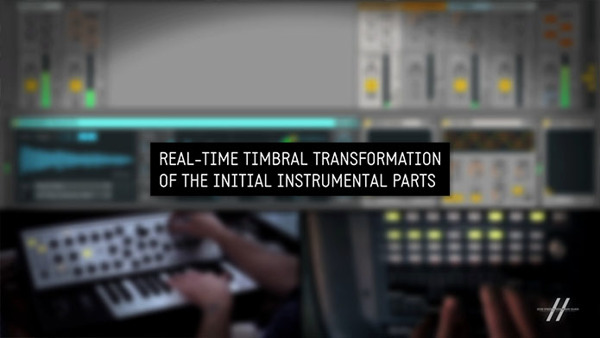
Composer/sound designer Diego Stocco has released a new episode in his new Feedforward Sounds series of premium sound design tutorials.
In this tutorial, Stocco looks at Convolution Processing. Here’s what he has to say about it:
Convolution processors are used for a variety of applications these days, emulation of real acoustic spaces, sonic behavior of hardware devices and more. When used properly they can add an aura or realism to the initial sound source.
But the concept of ‘reality’ in sound is exactly what a sound designer intends to transform, so rather than using a convolution processor as a static tool to approximate reality, I decided to use it in a different way, to perform with sound design as it would be possible to perform with a instrument.
Here is the preview video for the tutorial:
Each of Stocco’s videos in this series is priced at $9.99 and is available here.

Convolution is a super powerful way to combine and mangle sounds in ways that preserve a very acoustic quality. It really is an untapped goldmine of great sounds– and is surprisingly inexpensive to access. LAconvolver from lernvall audio is still available (for mac) which is donationware. Space Designer comes with the $29 mainstage (but that’s not available as a plug-in for a DAW).
For me, $10 a pop is a bit steep, and I’d prefer to just explore & experiment on my own. However, I could see the value in learning from Stocco’s experience.
I’m curious also as to what software he is using. Using sound designer is unsatisfying as I have to use mainstage… Maybe I should try LAconvolver.
It’s very easy to do a lot of this stuff offline but having it as a plugin sounds cool. Time for a new plugin?
Hi Bruno, in this particular case I’m using M4L Convolution Reverb Pro, but other convolution processors with similar functionalities would work too. The focus of my technique is not about that specific processor, it’s about using a set of modulated convolution processors in real-time, to generate responsive musical elements, not really as reverberation units : )
Hey Diego, great stuff you have here to teach us, thank you! I had the similar idea years ago that I used in some tracks, but I haven’t used it in years. Thanks for reminding me about this, I remember how much fun I had running weird samples as impulse responses and getting interesting results. I will revisit this idea for sure.
Thank you for the information Diego. I’ll probably check the video out. I’ve mostly focused on audio convolution from a more academic point of view (hence my offline references) so it will be good to get a hopefully refreshing perspective on it.
Thanks Bruno, this is definitely centered around a practical use of the technique, especially in a musical/real-time context, but your technical knowledge will come handy for sure! : )
that’s why you are one of my favourites sound designers in the world.
Really appreciate the kind comment, thanks Marco! : )
Diego – thanks for responding to reader comments!
Diego, (if this IS indeed Diego S.) Love your work in Omnishpere. Off topic, but where the heck is a new Spectrasonics VI!?
Checked out the Rhythmic Processing and the Convolution Processing videos. I have to say, they are presented very well. It has for sure inspired some imagination!
Thank you Laine, glad you found them useful! : )
I believe the price is right. I am on a PC. What would be the cheapest or freeware plugin/app for me to play around with IR?
LiquidSonics Reverberate LE – free and zero-latency